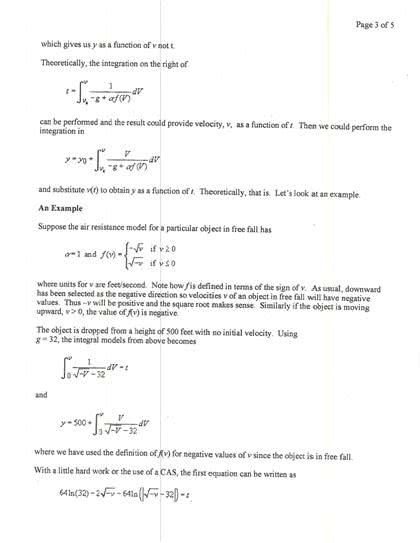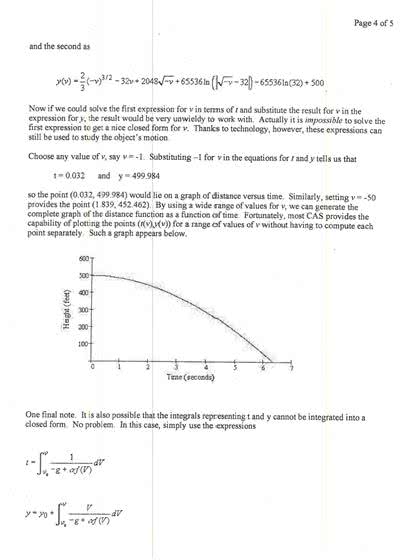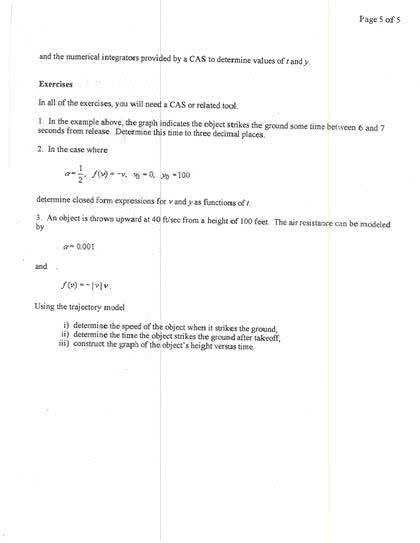MAT136H1 Chapter Notes - Chapter 3b: Partial Fraction Decomposition, Antiderivative

MATH136 – Lecture 16 – Integration by Partial Fraction
Mathematics: Reducing Problems
Example: Reducing partial problem to find an integral:
Once we have an approximation for finding a quantity on a slice, we can use out “slicing”
process to obtain an integral.
Example: Substitution and Integration by Parts:
Reduce a complex integral computation to a simpler one that we already know how to solve
with “guess and check”.
Today: we know how to integrate fractions like
via substitution and
. How can we
reduce the problem of computing integral of rational function to this one?
Strategies for Integrating Rational Functions
• If the degree of degree of , try long division and use the method of partial
fractions on the remainder.
• If is the product of distinct linear factors, use partial fractions of the form
• If contains repeated linear factor , use partial fractions of the form
• If contains an unfactorble quadratic , try a partial fraction of the form
Question: Where a trigonometric function?
For which of the following functions, do you expect to see a trigonometric (pr inverse
trigonometric) function its anti-derivative
A.
B.
C.
D.


92
MAT136H1 Full Course Notes
Verified Note
92 documents
Document Summary
Math136 lecture 16 integration by partial fraction. Example: reducing partial problem to find an integral: O(cid:374)ce (cid:449)e ha(cid:448)e a(cid:374) app(cid:396)o(cid:454)i(cid:373)atio(cid:374) fo(cid:396) fi(cid:374)di(cid:374)g a (cid:395)ua(cid:374)tit(cid:455) o(cid:374) a slice, (cid:449)e ca(cid:374) use out (cid:862)slici(cid:374)g(cid:863) process to obtain an integral. Today: we know how to integrate fractions like (cid:2869)(cid:3028)+(cid:3029) via substitution and (cid:2869)(cid:4666)(cid:4667). If the degree of (cid:1842)(cid:4666)(cid:4667) degree of (cid:1843)(cid:4666)(cid:4667), try long division and use the method of partial. If (cid:1843)(cid:4666)(cid:4667) is the product of distinct linear factors, use partial fractions of the form (cid:3002) (cid:3004) If (cid:1843)(cid:4666)(cid:4667) contains repeated linear factor (cid:4666) (cid:1855)(cid:4667), use partial fractions of the form. If (cid:1843)(cid:4666)(cid:4667) contains an unfactorble quadratic (cid:4666)(cid:4667), try a partial fraction of the form (cid:3002)+(cid:3003)(cid:4666)(cid:4667) (cid:1827)(cid:2869) (cid:1855)+ (cid:1827)(cid:2870) (cid:4666) (cid:1855)(cid:4667)(cid:2870) fractions on the remainder. Answer is d, because the term (cid:4666)(cid:2870)++(cid:886)(cid:4667) in denominator can not be factored/simplified so that you would get an integral for the form (cid:2869)(cid:3118)+(cid:3028)(cid:3118)(cid:1856) as one of the integrals when the integral after completing the square is split.




